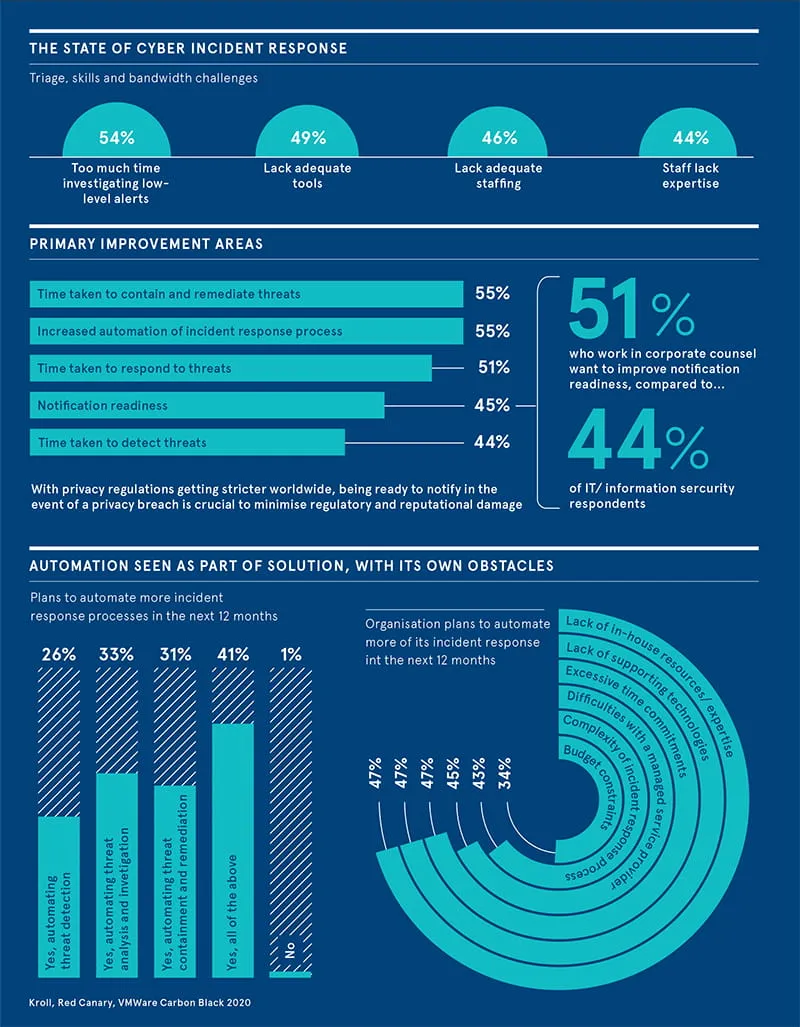ALM Intelligence Pacesetter Research - Cybersecurity Services 2020
by Jason N. Smolanoff

Mon, Apr 5, 2021
With most organizations receiving over 100 threat alerts every day and a reduction of endpoint visibility due to the shift to remote work, the ability to quickly detect and confidently respond to cyber threats has become a difficult challenge for organizations to undertake on their own.

Back in 2015, Adrian Leppard, the then City of London police commissioner, made a striking statement: cybercrime had eclipsed the drugs trade in value to organized crime and the police did not have enough resources to tackle it. It’s not often a police commissioner’s comments make it into the business pages of newspapers, but it was clear that organizations of all sizes shared his concerns – and unlike the drugs trade, they were all potential targets.
Since then, the proliferation of organized crime and get-rich-quick merchants on the internet has accelerated even further, amplified by a global pandemic that has seen fraudsters prying on people working from home. According to Kroll, the corporate investigations and risk consulting firm, national lockdowns have caused ransomware to overtake business email compromise as the principal attack affecting companies.
“Part of that is because there is no business as usual, and it is huge money that can be made relatively easily without fear of detection or being caught,” says Andrew Beckett, managing director and EMEA leader for Kroll's Cyber Risk Practice. ”IT estates are now distributed and it's harder to monitor for companies that didn't have strong monitoring in place beforehand. A lot of organizations are using out-of-date, unpatched VPNs, and you’re not sitting next to a colleague who can just do a quick sanity check for you. “Does this look right to you?” “Do you think I should do this?” You don't have that option anymore.”
“The pandemic highlighted the flaws in existing incident response processes, as well as the lack of effective endpoint and network monitoring solutions. Companies were caught on the back foot by an unprecedented situation and it has brought to the fore the lack of basic controls, and the lack of process to put it right because many organizations have struggled for budget to sort this out in a meaningful way through the Covid crisis.”
A recent study conducted by Kroll, VMWare Carbon Black and Red Canary amongst 500 security and legal leaders found that 93 per cent of large organizations have suffered at least one incident that led to a compromise of data over the past 12 months. And when a cyberattack occurs, 92 per cent said they are not completely confident in their ability to identify the root cause.
Security leaders indicate that more security issues are likely, with two-thirds believing their organization is vulnerable to a cyberattack that could disrupt business or lead to a data breach. Yet their ability to strengthen security faces numerous internal headwinds. Nearly half of respondents said they are not conducting regular security readiness exercises with leadership and that security is actually viewed as a business impediment.
The research also exposed some discrepancies between infosec teams and corporate counsel, with 52 per cent of the latter saying their organization lacks readiness to notify in the event of a security breach, compared with 43 per cent of the respondents overall.
“It was not really a surprise to us that 54 per cent of security leaders said their organization was spending too much time investigating the little incidents and couldn't deal with the big ones,” notes Beckett. “What is interesting is seeing the different areas that security staff and general counsel worry about. Corporate counsel worries about attribution, “Who was behind the attack?”. But much fewer people in security share that concern as they know the difficulties and costs involved in identifying perpetuators.”
“It is also interesting to see contrasting views on what is in place already. Over half of corporate counsel were fairly satisfied they had the right to audit their third-party vendors. Yet fewer than 40 per cent of security leaders thought it was in place or felt they had the right to check compliance and security standards being applied by third-parties.”
Crucially, 55 per cent of organizations said they need to improve the time taken to contain and remediate threats, with the same number wanting to increase automation of the incident response process, yet half lack in-house expertise or technology to do so.
To support this growing need, Kroll has moved from managed detection and response to enhanced detection and response, and now to next-generation detection and response. Applying enhanced learning to the tooling that’s deployed improves and accelerates the detection of indicators of compromise (IOCs), and the ability to link two or more areas that have been detected on the system quickly builds the bigger picture.
“The ability to quickly detect and then isolate an attack as a way of then getting it off your system is the biggest thing that that companies are working on at the moment to minimize business interruption,” says Beckett. “Our Kroll Responder service deploys endpoint agents to monitor networks and the endpoint. You quickly spot those IOCs or abnormal activities. We then have a team of shift-working analysts working 24/7 to detect those suspicious activities and do the initial triage, backed up by our global team of incident investigation and triage practitioners who analyze and determine what is going on.”
Three-quarters of organizations already use third parties as part of their incident response process, according to Kroll’s study, and it’s clear that partners will play a key role in providing the economies of scale required for effective monitoring and response. “Third-party partners facilitate the speed and the augmentation of in-house services that companies need, while dedicated monitoring technology gives the second and third line support expertise to respond around the clock when a major cyberattack takes place.”
“The attacker has to get lucky once, we have to be right 100 per cent of the time,” Beckett adds. “There is an arms race in terms of the exploitation of new technology between the attackers and defenders. Attackers are using enhanced learning, artificial intelligence and quantum computing to either generate the next-level attack or bypass security. On the defenders' side, we're got to quickly identify those tools and techniques that are in use. We are looking for the zero-day vulnerabilities to identify and patch them before the attacker develops an exploit. Use of our own enhanced learning and artificial intelligence helps us to do that.”
This article is part of Raconteur’s The Future CIO Report, distributed in The Sunday Times. The full report is available for download on this page.
Stop cyberattacks. Kroll Responder managed detection and response is fueled by seasoned IR experts and frontline threat intelligence to deliver unrivaled response.
Kroll’s elite security leaders deliver rapid responses for over 3,000 incidents per year and have the resources and expertise to support the entire incident lifecycle, including litigation demands. Gain peace of mind in a crisis.
Kroll's computer forensics experts ensure that no digital evidence is overlooked and assist at any stage of an investigation or litigation, regardless of the number or location of data sources.
Kroll’s remote work security assessment identifies vulnerabilities of work-from-home employees and networks, and provides guidance on minimizing the risks posed by a decentralized network often complicated by personal devices and unstructured environments
Kroll’s ransomware preparedness assessment helps your organization avoid ransomware attacks by examining 14 crucial security areas and attack vectors.
Kroll’s data breach notification, call centers and monitoring team brings global breach response expertise to efficiently manage regulatory and reputational needs.
Kroll delivers more than a typical incident response retainer—secure a true cyber risk retainer with elite digital forensics and incident response capabilities and maximum flexibility for proactive and notification services.
by Jason N. Smolanoff

by Keith Wojcieszek, Laurie Iacono

by Aravind Swaminathan

